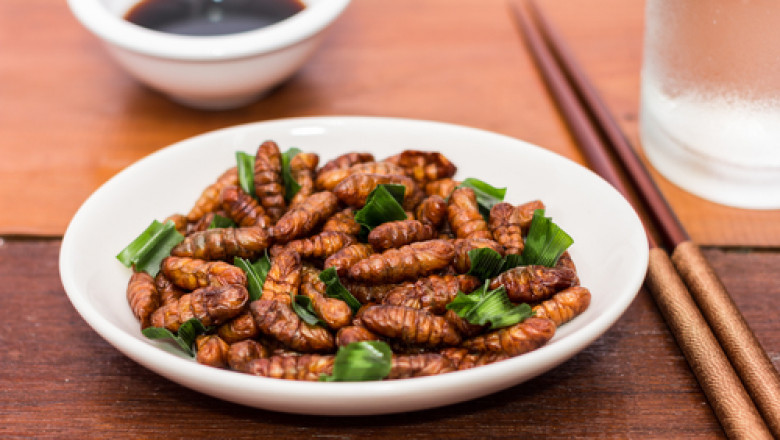views
The insect protein market has transitioned from a fringe alternative to a structured, data-driven opportunity area. As commercialization expands across food, feed, and industrial sectors, market intelligence becomes essential for stakeholders looking to navigate competitive pressures, regulatory landscapes, and operational complexities. By analyzing key players, regional dynamics, supply chain logistics, and strategic investments, this intelligence report delivers actionable insights into the insect protein industry’s current standing and long-term trajectory.
Competitive Landscape and Business Models
The competitive environment within the insect protein market is increasingly defined by vertical integration and technological specialization. Leading players such as Ÿnsect (France), Innovafeed (France), and Protix (Netherlands) are not only developing advanced farming operations but also controlling downstream processes including protein extraction, product development, and distribution.
Start-ups and mid-sized enterprises are differentiating themselves through species specialization—particularly black soldier flies and crickets—and proprietary rearing systems. Meanwhile, multinational food and agribusiness corporations are entering the space via partnerships and minority equity investments, underscoring the market’s perceived long-term value.
Companies with strong IP portfolios in automated farming, feed optimization, and microbial risk management are expected to gain competitive advantage, especially as global food producers seek stable, scalable sources of alternative protein.
Regional Intelligence and Market Penetration
Europe remains the dominant region in terms of regulatory progress, production capacity, and R&D investment. Countries like France, the Netherlands, and Belgium have created supportive ecosystems through grants, policy alignment, and academic-industry collaboration. The EU’s authorization of insect protein in aquafeed and livestock feed has spurred innovation and infrastructure buildout across member states.
Asia-Pacific, particularly Thailand, China, and Vietnam, offers both large-scale production capabilities and cultural familiarity with insect consumption. This region is likely to become a manufacturing powerhouse due to lower labor costs and favorable environmental conditions for insect rearing.
North America is steadily catching up, with the U.S. expanding its regulatory clarity and investment flows into insect protein start-ups. Canada is also witnessing the growth of commercial facilities supported by agri-tech funds and sustainability-focused programs.
Supply Chain and Operational Considerations
Supply chain intelligence reveals a strong move toward localized and circular systems. Insect farming operations are increasingly situated near food processing plants, breweries, or agricultural hubs to source organic waste streams as feedstock. This strategy not only reduces input costs but also aligns with ESG standards on waste reduction.
Cold chain logistics for insect protein products, particularly in the food segment, are becoming a consideration as consumer-facing brands expand. In contrast, insect meal for animal feed often bypasses refrigeration needs, making it more viable for longer transport routes.
Processing infrastructure remains a bottleneck in some markets, creating opportunities for third-party toll processing models or public-private investment in shared facilities.
Investment and M&A Intelligence
Over the past five years, the insect protein market has seen a surge in private equity, venture capital, and strategic corporate investments. Funding rounds frequently target scale-up initiatives, automation technology, and product development for new application verticals such as cosmetics, bioplastics, and pet food.
Mergers and acquisitions are beginning to reshape the competitive landscape. Recent deals suggest that consolidation will be a natural outcome as companies seek synergies in species specialization, IP ownership, or regional market access. Investors are increasingly prioritizing companies that demonstrate lifecycle sustainability, traceability, and cost control.
Policy Intelligence and Trade Implications
Trade dynamics and regulatory intelligence show that cross-border commerce in insect-based products is still emerging. Harmonization of safety standards and labeling laws will be vital for enabling international growth. Nations with clearer rules—like those in the EU—have a first-mover advantage and are shaping the global narrative on insect protein’s acceptability and safety.
Meanwhile, countries with ambiguous or absent regulatory pathways are at risk of falling behind in both production and consumption. Stakeholders must stay engaged with evolving food safety codes, import/export requirements, and subsidy policies that can make or break market access.
Conclusion
The insect protein market is supported by robust intelligence streams that illuminate its evolving structure, competitive intensity, and investment appeal. For industry players, regulators, and investors, this intelligence is not just about tracking data—it’s about strategically positioning for a future where insect protein plays a central role in sustainable, resilient food systems.
With informed decisions and strategic alignment, early movers in the insect protein value chain stand to capture a significant share of a market poised for transformational growth.






















Comments
0 comment